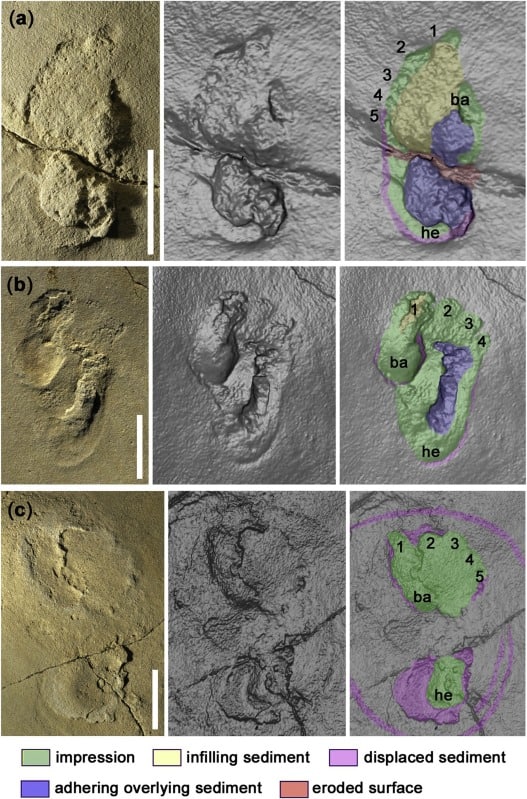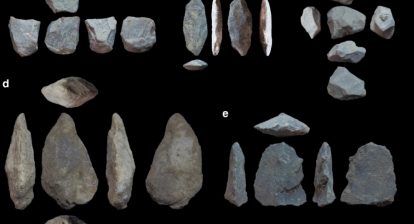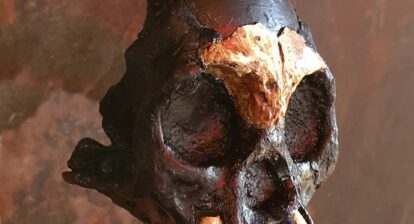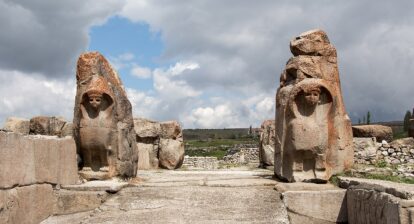In 2017, footprints or tracks from the Trachilos locality in western Crete (Greece) were found, showing hominin-like characteristics. Analysis conducted at that time showed that they were probably left by an ancient hominin-like creature from 5.7 million years ago, and that the trackmaker was bipedal. This was an amazing find and an addition to the sparse archaeological evidence of our ancient ancestors that we have found to date. The 5.7 million year old timeline meant that these were the oldest hominin tracks ever found.
Now a new analysis, published recently, suggests that the tracks are even older – 350,000 years older infact – at 6.05 million years old. The researchers used paleomagnetic and micropaleontological methods and analyzed 57 samples from across the site in Crete.
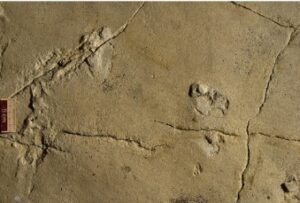
Photograph of two prints possibly representing a static stance of one individual. Source: Gerard D.Gierliński et al.
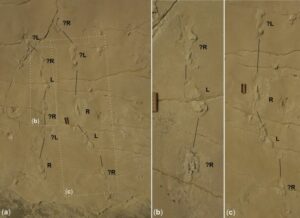
Trackways. (a) Two trackways from surface B2, details shown in (b) and (c). R and L indicate right and left footprints. Source: Gerard D.Gierliński et al.
According to the team, the footprints could belong to a primate known as Graecopithecus freybergi. Specimens of teeth belonging to Graecopithecus freybergi are thought to be 7.2 million years old and scientists think this could be our oldest direct ancestor, from around the time when the human and chimpanzee lineages had just separated (somewhere between 13 – 4 million years ago).
“This morphology includes characters that are currently considered [to] be unique to hominins such as the presence of a forefoot ball, a non-divergent and robust hallux placed alongside digit II on the distal margin of the sole and digits II through IV becoming progressively shorter,” says the study. “These are combined with generic primate traits such as the absence of a longitudinal medial arch, a proportionately shorter sole and a heel that is not bulbous.”
(Fossils of Unknown Species of Ancient Humans Found in Israel and China)
Because not everyone agrees to the hominin origins of the tracks, the team also accepts that, “This interpretation has been controversial, and several counter-interpretations have been made.” “For example, other researchers have suggested that the Trachilos tracks may have been made by a non-hominin primate with an adducted hallux and they illustrated this with reference to a gorilla footprint.” However, they do highlight that the hypothesis that the track-maker could be a primitive bipedal hominin like G. freybergi has not been disproven.
“Irrespective of the affinity of the Trachilos footprints to the hominin lineage, we have in this paper refined the age of these tracks by placing them on a more secure geochronological basis. This will allow future descriptive and comparative analyses to be based on a robust temporal framework, facilitating the evaluation of the true significance of the Trachilos footprints and their relationship to the hominin lineage,” write the scientists.
The origin and identification of the representatives of our hominin lineage have been a matter of much debate. Generally, it is thought that our first ancestors originated in Africa but there is also evidence to show that the earliest hominins might have evolved in Eurasia – and that too on Crete, which is an island. As the paper highlights, “Despite numerous publications suggesting an origin in Africa, there are evidences that the earliest hominins might have evolved in Eurasia. Evidence for a Miocene hominin presence in Europe includes both body and trace fossils,”
(Back to Africa – the story of our hominin ancestors)
All in all, we do know that our ancient history is complicated, however it is clear that these tracks are very very old and may potentially belong to an ancient ancestor, which makes them very exciting!
